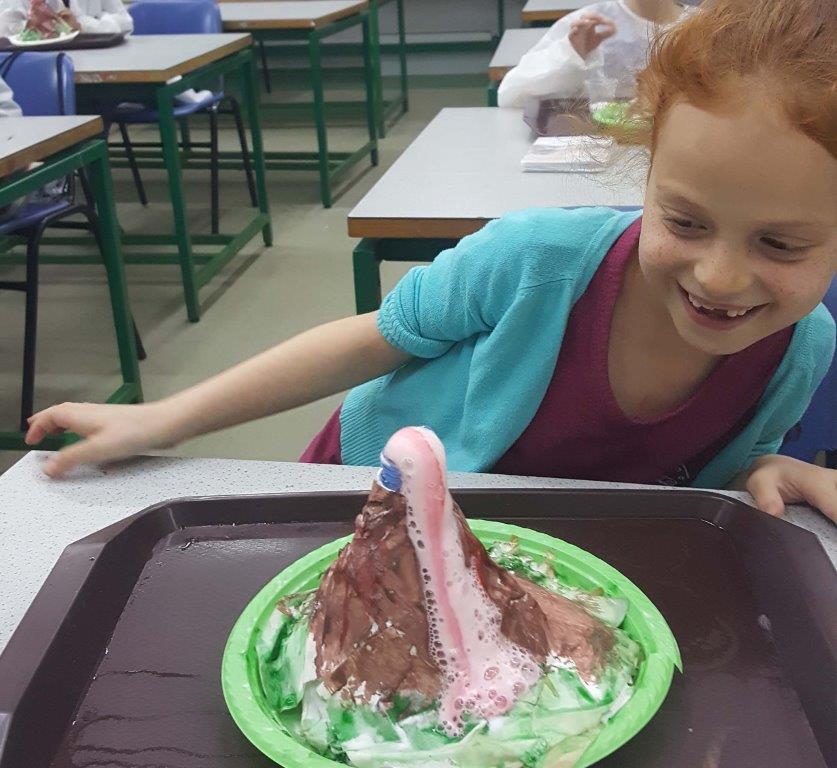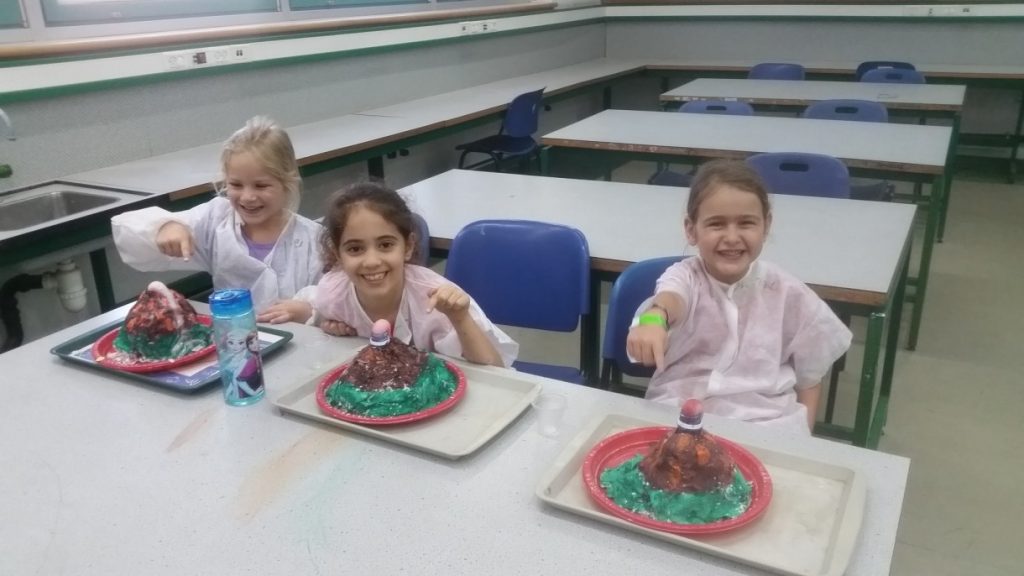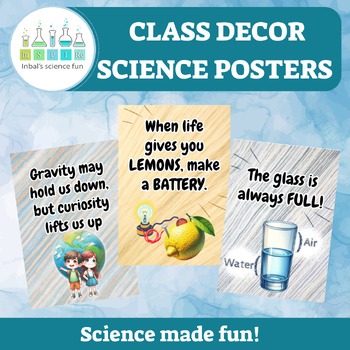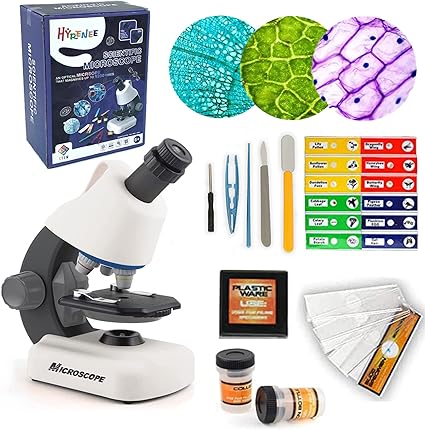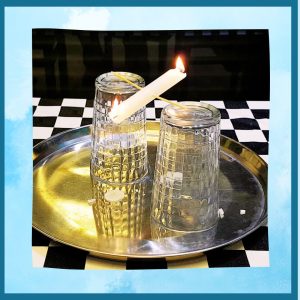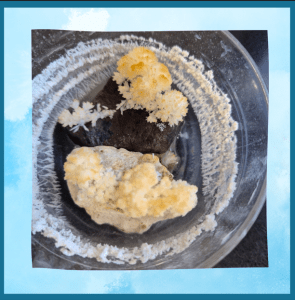PH Volcano experiment
Get ready for an explosive and educational adventure with the Volcano Experiment!
This experiment allows you to explore the fundamentals of geology and chemistry using common household items.
we will investigate the chemical reaction that occurs when baking soda and vinegar are combined and recreate the mesmerizing eruptions seen in nature’s volcanoes.
Materials:
- Erlenmeyer or bottle
- Vinegar
- Baking soda
- dish soap
- red food coloring
- A cup and a spoon
What to do?
- Pour vinegar into a cup (3/4 cup).
- Add food coloring until you get a dark red color.
- pour dish soap generously and mix well (try not to make a lot of foam)
- add 3 spoons of baking soda into the Erlenmeyer.
- add the contents of the cup into the Erlenmeyer
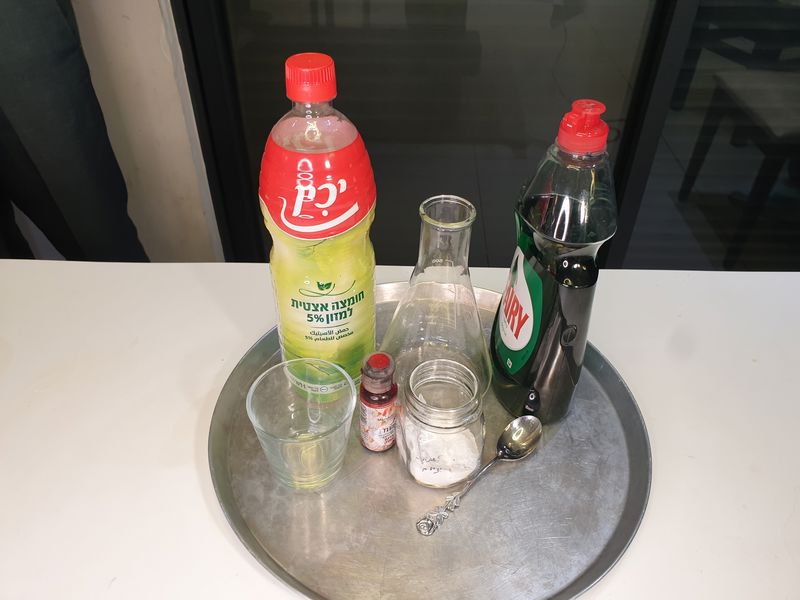
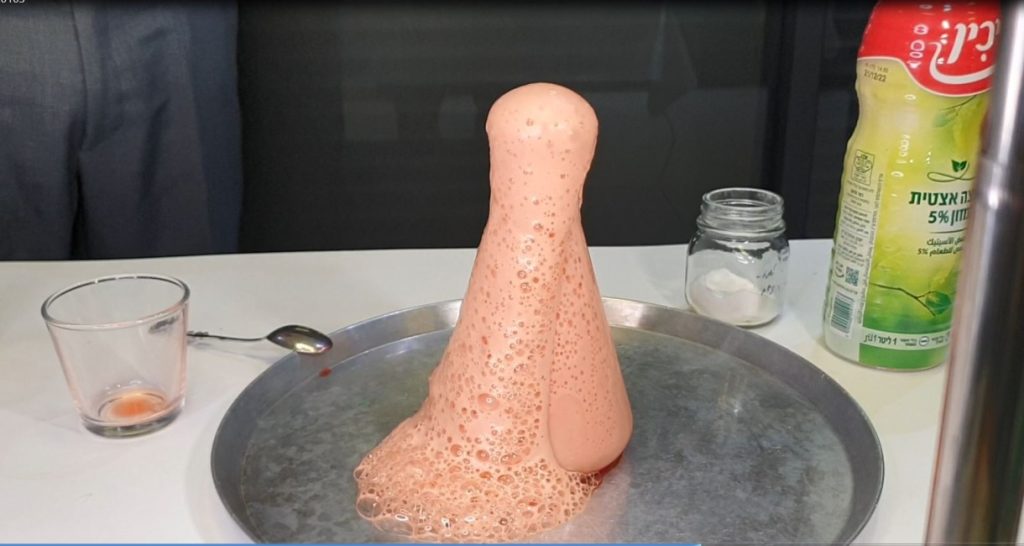
How does this happen?
When we conduct this Volcano Experiment, we’re actually causing a chemical reaction to happen. when we mix baking soda and viniger, they start to react. The baking soda (which is called sodium bicarbonate) and the vinegar (which is called acetic acid) combine to form a new substance called carbonic acid. This new substance is not very stable, which means it doesn’t stick around for long.
So, carbonic acid starts to break down into two things: water (H2O) and carbon dioxide gas (CO2). You might have heard of carbon dioxide before; it’s the same gas that you breathe out when you exhale or the gas in your soda drink. In our experiment, all that gas is in our ‘volcano.’
As more and more gas builds up inside our ‘volcano,’ it starts to climb up. Eventually, bursting out just like a volcano erupting.
Because we added soap to the vinegar, the carbon dioxide that is released creates tiny soap bubbles and hence the foam burst.
The red color, of course, adds to the effect and gives the appearance of an erupting volcano.
Turn this experiment to a science project:
What do you think will happen if we bring a burning toothpick or match close to the foam?
Carbon dioxide inhibits combustion, and the fire will go out. You can see the full explanation in the experiment: The Fire Department.
*If you like this experiment, you should definitely try the elephant toothpaste experiment.
You will get a similar result but in this experiment the foam is created by the emission of oxygen. And in this case, if we bring a burning toothpick or match close to the foam, the result will be different!
We’d love to showcase your creativity!
Share pictures of your experiments with us, and together, we can inspire young scientists everywhere!

